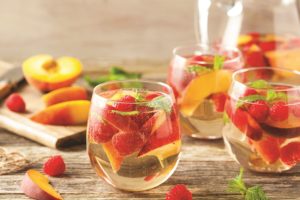It was the year of the Chicken Dance and I was studying abroad in the old university town of Salamanca, Spain. Dictator Francisco Franco had been dead just a few years and the new king, Juan Carlos I, had successfully defended the country’s nascent democracy against a rightist putsch only a year earlier. The country was bursting with new freedom and energy, the beginnings of what became known as “La Nueva Onda,” the New Wave.
This was also the time when Spain was seeking membership in NATO. Or, by some accounts, the idea was being pushed by the U.S., so student protests against the alliance were rowdy and frequent. A lot of the Americans studying in Salamanca that year joined in the protests, myself included. After protesting, we, both Spaniards and Americans, would go back to our student residences and gather in the TV lounge to watch episodes of “Dallas.” For it was also the year of “Who shot J.R.?”
Still, I remember it all as a heady time of political discussions fueled by amazing coffee, delicious tapas, and sangria.
There were many student bars near the university (which was one of the first four universities in Europe established by Papal Bull in the 12th century) and around the Plaza Mayor, a place often called the most perfect square in Spain. Our designated hangout on the Plaza was Bar Cervantes, full of wooden tables and benches, ancient stone walls, and thick smoke from cheap black tobacco cigarettes.
Our group included several who would go on to illustrious careers as attorneys, writers, restaurateurs, and one (now very famous) movie director. But I was 20 years old, and that was all in the distant future. For now, we crowded as much fun and sangria as we could between the two or so hours after dinner and before curfew.

The sangria at Cervantes was a mix of cheap if quaffable red wine and equally cheap brandy, along with cinnamon and other mysterious ingredients. The moody stuff was a fortification against the whipping winter winds that swept across the Castillian plain. Sangria hangovers did little to dampen our spirits. Though now, I fear it might.
What I want now is a lighter, drier drink. My high summer version is made with white wine. And though summer sangria is surely a mostly-for-tourists thing in Spain, it is nonetheless a tasty cocktail for the season. And it’s an excellent one to make at home, where you can take care to mix it to avoid cloying sweetness. Think of it as the essence-in-a-glass of a warm summer afternoon.
You must start with a dry white wine from Spain — an Albariño, Godello, or Verdejo (although Sauvignon Blanc will do in a pinch). For a bit of depth, you’ll add small quantities of peach schnapps and apricot brandy. The essential summer fruits to include are peaches, strawberries, and — to bring it home to Cape Cod — some of the local blueberries or raspberries ripening up right now. A topper of sparkling Spanish cava finishes it off just right.
Summer Sangria
makes one large pitcher
1 bottle dry Spanish white wine
1/4 cup peach schnapps
1/4 cup apricot brandy
2 ripe peaches, pitted and thinly sliced but not peeled
1½ cups strawberries, hulled and thinly sliced
1½ cups blueberries or raspberries
Spanish Cava to finish
Combine the white wine, brandies, and fruit in a pitcher and stir together gently.
Set aside in the refrigerator for up to four hours to allow the fruit to macerate.
To serve, scoop fruit from bottom of pitcher with a ladle into a good-size wine glass, then fill glass three-quarters of the way with the sangria. Top off each cocktail with a little cold Cava.
Let’s drink to Spain and to democracy!



